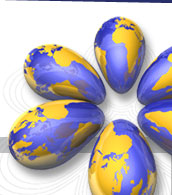Principle
There is no secondary fermentation (“prise de mousse”) in this method. The CO2 gas is exogenous. It is continuously added to the wine stream, which has already been stabilised and chilled to -2 °C. This process is continuous.
The CO2 gas comes from a reserve tank, which holds the gas at high pressure. Only food-grade CO2 gas is used. The gas pressure is reduced, and the gas is added proportionally to the wine (brut, demi-sec, sweet, etc.) in a vessel known as a saturator. A fritted metal capsule with very small pores is used in order to distribute the gas in fine streams. The gas dissolves instantaneously and extensively in wine. The excess gas in the wine is compressed upon bottling, and effervescence will appear when the bottle is opened. At the saturator outlet, the wine is immediately bottled with a counter-pressure filler.
The bottles are immediately corked and wired. The carbonation is continuous when the line is in service.
- Phase 1 : Making the base wine
Classic still white winemaking techniques.
- Phase 2 : Making the effervescent/sparkling wine.
See the figure below.
Dissolving a certain quantity of CO2 gas in dry or sweet wines using liquefied CO2 is known as carbonation.
Wine Types :
- Carbonated semi-sparkling or pearl wine (1 to 2.5 bar at 20°C)
- Carbonated sparkling wine (greater than 3 bar at 20°C)
In France, carbonated wines cannot be labelled with an appellation name (AOC), and they cannot be entered in the Effervescents du Monde competition since they contain exogenous CO2.




